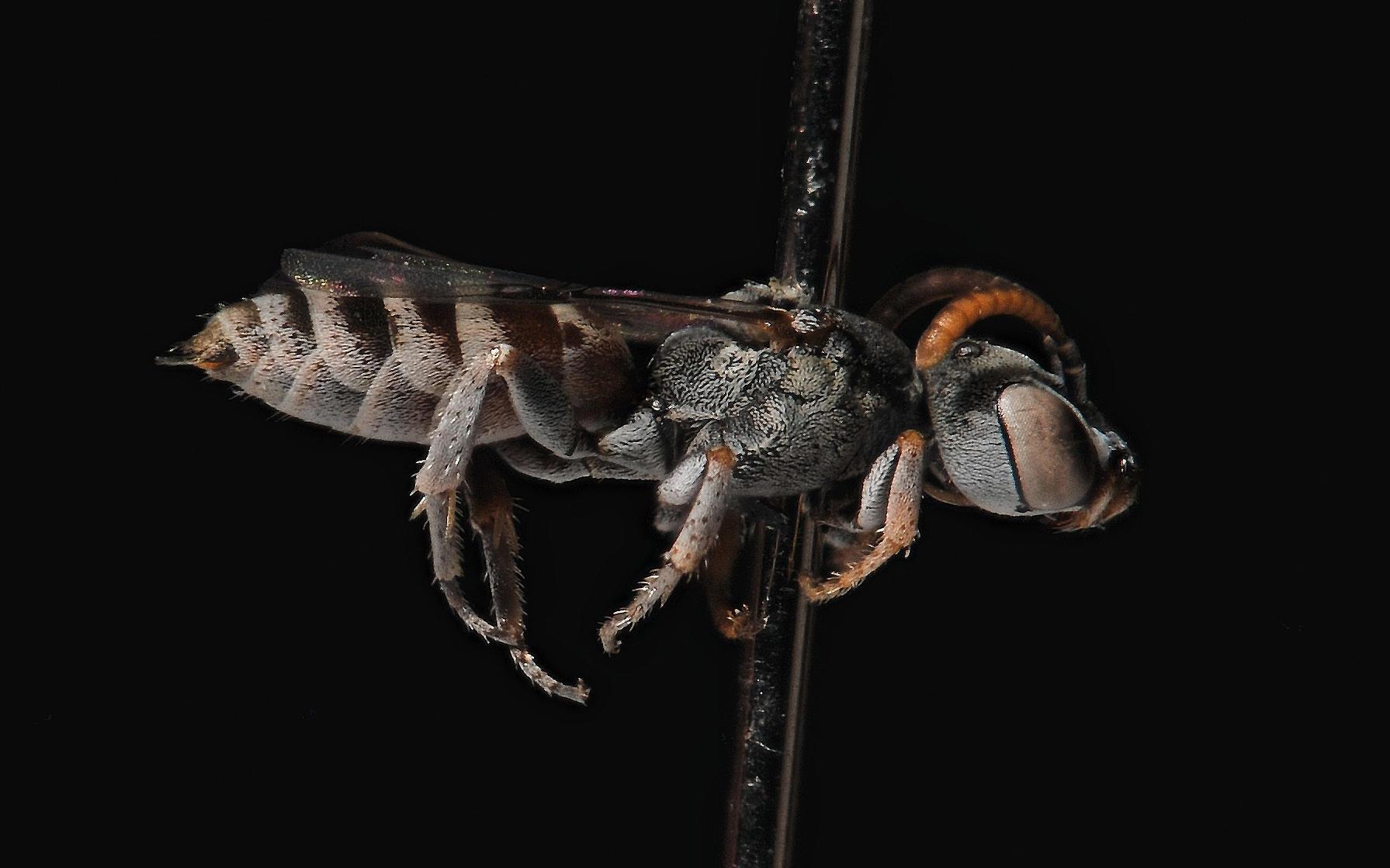Until recently, bees in the genus Neolarra had never been seen in Oregon. The species Neolarra vigilans had never been documented anywhere in the Pacific Northwest.
These bees are also rare elsewhere. Neolarra vigilans has been identified at only a handful of locations. It was found in the Petrified National Forest in Arizona in September 2010 and in the Colorado National Monument in August 2011.
That all changed in July 2019. That month, OSU Master Melittologists Michael and Dan O'Loughlin discovered the minute, slender Neolarra vigilans on a friend's lawn in Burns, Oregon. Their discovery extends the range of these bees several hundred miles north of their previously known range.
The brothers have since found more species of Neolarra south of the Alvord Desert in Harney County, Oregon, and on their friend's front yard.
Bees in the genus Neolarra are found only in North America. They are cleptoparasites, meaning that they steal food that other bees have collected. Rabbitbrush fairy cuckoo bees prey on the nests of the smallest bees in the U.S., the fairy bees of the genus Perdita.
Fairy bees nest in the ground. The rabbitbrush fairy cuckoo bee waits for a fairy bee female to leave the nest. It then sneaks down the tunnel and lays an egg in a cell with a fairy bee egg.
Little is known about the strategies used by Neolarra to overwhelm its host. However, it comes from a diverse group of cuckoos (Subfamily Nomadinae, Family Apidae) who share common behaviors.
Neolarra eggs likely are inserted into the walls of brood cells where pollen and fairy bee eggs have been deposited by a fairy bee female. In this way, they are hidden from the returning fairy bee. After a brood cell is sealed by the fairy bee female, the young Neolarra larva develops a hard, sickle-shaped tooth. It uses this tooth to kill the host egg or young fairy bee larva. The Neolarra larva is then free to consume the stored pollen and complete its development.
This finding is one of many discoveries of high scientific value made by Oregon's Master Melittologist volunteers. Over the next decade, volunteers are hoping to build an Atlas of Oregon bees that contains range maps for all of the 600 to 700 bee species in the state. The Atlas will also list the preferred pollen and nectar sources of each species.
The Oregon Bee Atlas is a one-of-a-kind program in the U.S. It is led by volunteers working under the umbrella of OSU Extension. Since 2018, volunteers have contributed 100,000 new bee records from every county in the state. The Atlas will help Oregonians make informed conservation decisions to ensure Oregon remains the best place in the nation for bees.
Reference: Michener, C.D. 1939. A revision of the genus Neolarra (Hymenoptera: Nomadidae). Transactions of the American Entomological Society (1890-) 65(4):347–362.



















